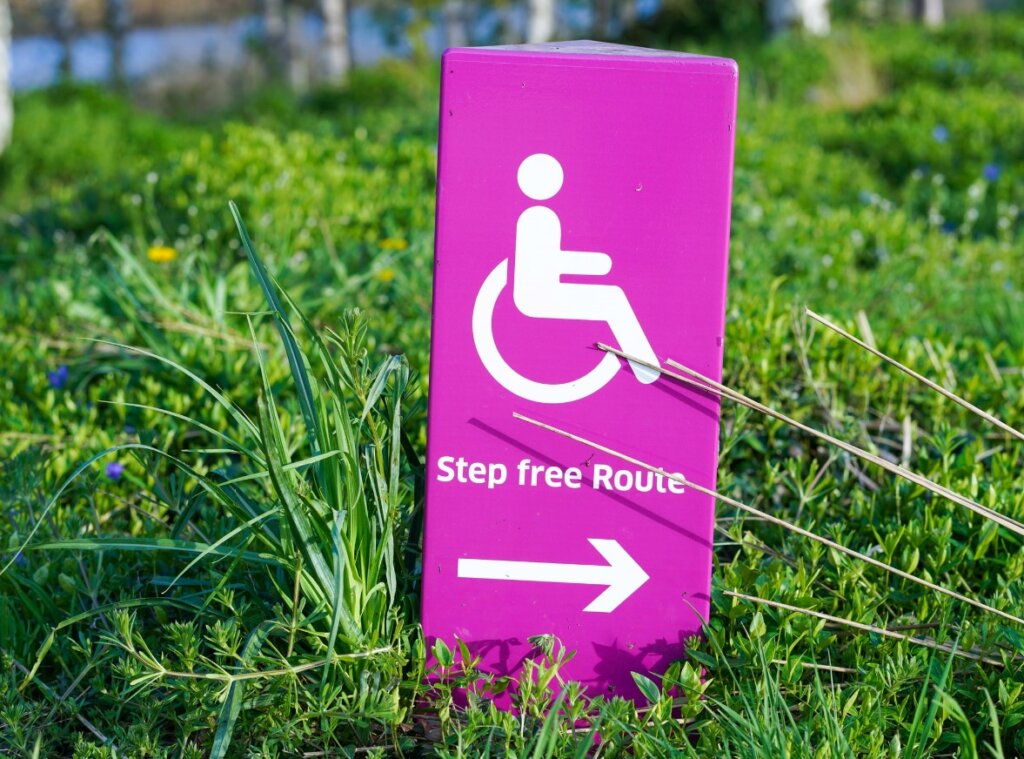This summer marked the 30th anniversary of the passing of the Americans With Disabilities Act (ADA). Somewhat less notably, my 30th birthday was also this summer, placing me squarely in the “ADA Generation.” Although 30 years of what some consider the Civil Rights Act for people with disabilities is worthy of celebration, much remains to be done for diverse individuals to achieve equity and inclusion. By sharing my experience as a lawyer living with a disability and some of the misconceptions I have faced, I hope you gain new insights on how to be more inclusive for individuals with disabilities in your work.
I live by myself in Minneapolis, practicing intellectual property and products liability litigation at Maslon LLP. I graduated with a degree in mechanical engineering from the University of St. Thomas and obtained my law degree from the University of Minnesota. In my free time, I sing in a choir (pre-COVID), am active in the Federal Bar Association, and enjoy spending time with my partner, friends, and cat.
If you didn’t know that I have a disability, these facts would not be particularly noteworthy. However, people have assumed I would be unable to do each of these things because of my disability. Neighbors openly doubted my ability to attend college, despite my graduating near the top of my high school class. In recent years, work supervisors have questioned my ability to produce a typed memorandum or traverse sidewalks to go out to lunch. Assuming good intentions, people make comments due to ignorance. I can’t count the number of times I have been someone’s first coworker, employee, or friend with a disability.
In case you don’t know many individuals with disabilities, I’ll explain how I do the things people question. Note that disabilities—intellectual and physical—vary widely, and I speak only to my own experience. My muscular dystrophy condition has weakened my hands, arms, legs, feet, and respiratory system. As a result, I use a power wheelchair for mobility and rely on a team of personal care assistants to help me with personal tasks in my condo. As accessible housing is in depressingly short supply, I was lucky to find a condo that could be made wheelchair accessible.
Although I can drive a vehicle, the type of van I would need to drive myself is prohibitively expensive; for now, I live within walking distance of my office. As you also might imagine, my wheelchair is difficult to navigate through snow in the winter, so I also live close to a skyway entrance.
At work, I use a combination of dictation software and an on-screen keyboard to type. I also have worked with my places of employment to make minor accessibility modifications to the kitchen and bathroom. As an attorney practicing litigation on the national level, I have traveled to other states for work, and my experience dealing with damaged wheelchair parts from airline carelessness and finding accessible vehicles in other cities could fill another essay. Finally, the legal career can fatigue my already stressed body, and I have learned the importance of self-care including adequate nutrition and sleep. At times, managing my disability is stressful, expensive, and exhausting. I have had to become an adept problem solver to survive.
With the many problems people with disabilities face in a world that is not currently built for them, it may come as little surprise that the number of lawyers with disabilities in the legal field is dismally small. Though 20% of the general population lives with a disability, only 0.55% of firm attorneys reported having a disability, according to the National Association of Law Placement 2019 Diversity Report. Note that these numbers may not be the full story on the number of people with disabilities in law. Some individuals with invisible disabilities — such as those living with chronic pain or learning disabilities — choose not to report their disabilities out of fear of discrimination. This underreporting obscures the true number of lawyers with disabilities, a statistic important for determining whether our numbers are increasing or decreasing. And worse, by not disclosing their disability, lawyers may not receive accommodations to help them work best. Of course, the choice to disclose a disability is a calculated decision individuals make, balancing potential workplace repercussions with the opportunity to bring their full selves to work, as well as receive necessary accommodations.
Although we may not know the exact number of lawyers with disabilities, it is likely most individuals reading this have worked with few or no lawyers with open disabilities. This is a shame for the legal industry. Not only is it important for the industry to reflect society, but there are objective benefits to hiring people with disabilities. A study by DePaul University found that employees with and without disabilities have nearly identical performance ratings, and people with disabilities take fewer scheduled absences. Additionally, a study by Accenture found that companies that actively seek to hire people with disabilities had 28% higher revenues.
Hopefully, you are now wondering what you can do to promote individuals with disabilities in your work. The full answer is more than I can provide here, and much needs to be done on a policy level, but I recommend starting with the following:
No. 1: Consider signing the ABA Pledge for Change: Disability Diversity in the Legal Profession.
The ABA Pledge includes additional recommendations for the inclusion with disabilities, and becoming a signatory to the pledge signifies your commitment to candidates and current employees with disabilities.
No. 2: Ensure that you explicitly include people with disabilities in your diversity efforts.
Do you expressly include people with disabilities in your company’s statements on diversity or postings for diversity fellowships? Do you track the number of people with disabilities in your organization?
No. 3: Determine whether your public communications are accessible.
Does your website meet Web Content Accessibility Guidelines? Do you provide accommodations for deaf and hard of hearing individuals in videoconference presentations? Do you host events at physically accessible places? Who at your company is responsible for ensuring accessibility?
No. 4: Carefully consider your language.
Some people prefer person-first language, i.e., referring to others as people with disabilities rather than disabled people. Next, don’t say someone “suffers from” their disability or is “wheelchair-bound.” There is no doubt that disabilities can make living harder, but many of us are thriving. It hurts when people assume our lives are inherently sad. My wheelchair does not bind me; it allows me the freedom to go about my day.
No. 5: Educate yourself by learning from people with disabilities.
There is more media than ever before featuring people with disabilities. Watch Crip Camp (a documentary produced by the Obamas showcasing campers with disabilities who grow up to be activists), Love on the Spectrum (a docuseries showing adults with autism navigating relationships) or Lives Worth Living (a PBS documentary on the disability civil rights movement). Whatever you do, don’t watch anything featuring nondisabled actors playing people with disabilities or media that glorifies suicide for people with disabilities.
No. 6: Share your own stories of adversity.
If you are more senior in your workplace, please consider sharing your own experience with adversity so that individuals with disabilities or other struggles might feel more comfortable sharing about themselves and asking for help if needed. Sometimes, the effects of disability might be similar to crises that others have faced, and the law will be more empathetic if we are free to support each other.
Although this year has been hard, seeing the new urgency for understanding and promoting diversity has been encouraging. It is my great hope that people with disabilities are included in these important diversity efforts. The ADA has now existed for 30 years, but we have much work left to do to support and promote people
with disabilities.








